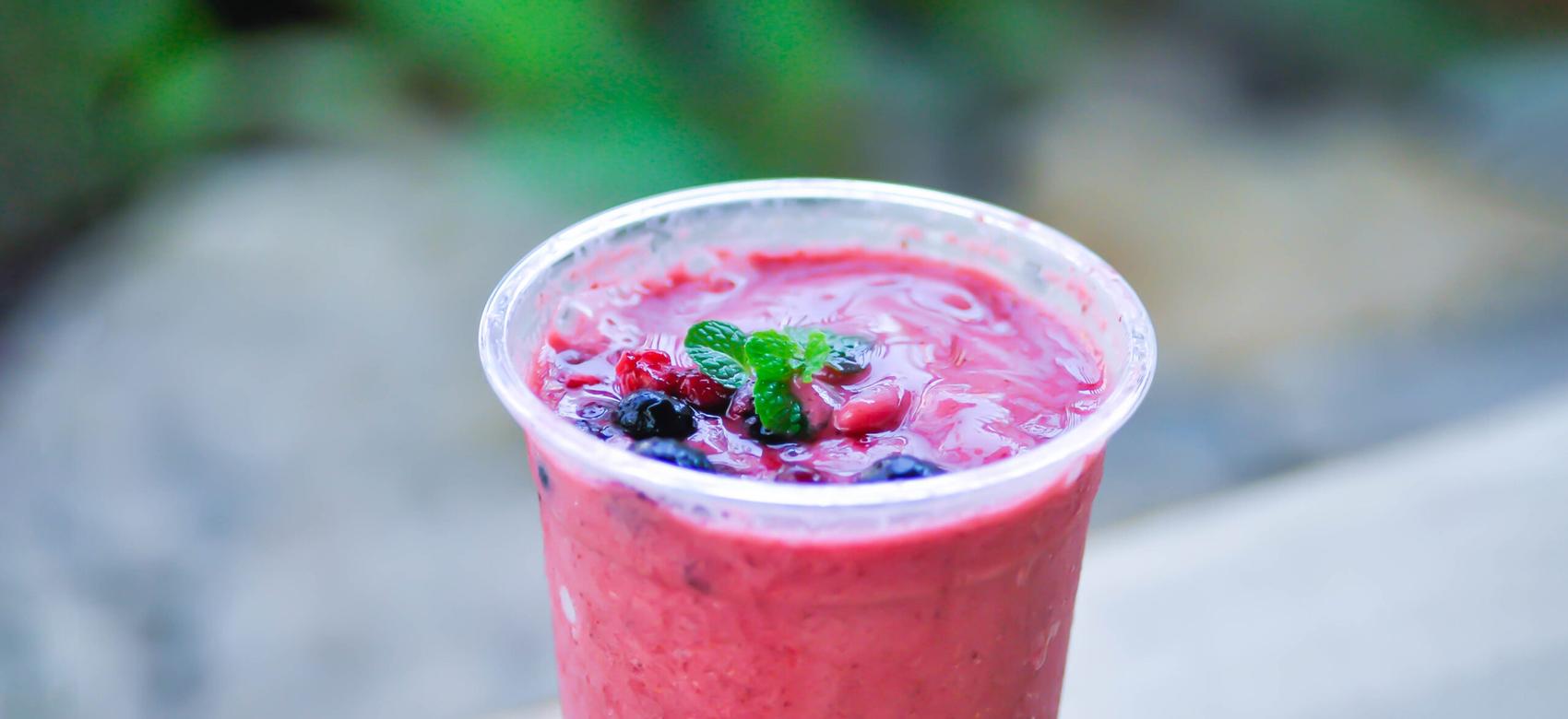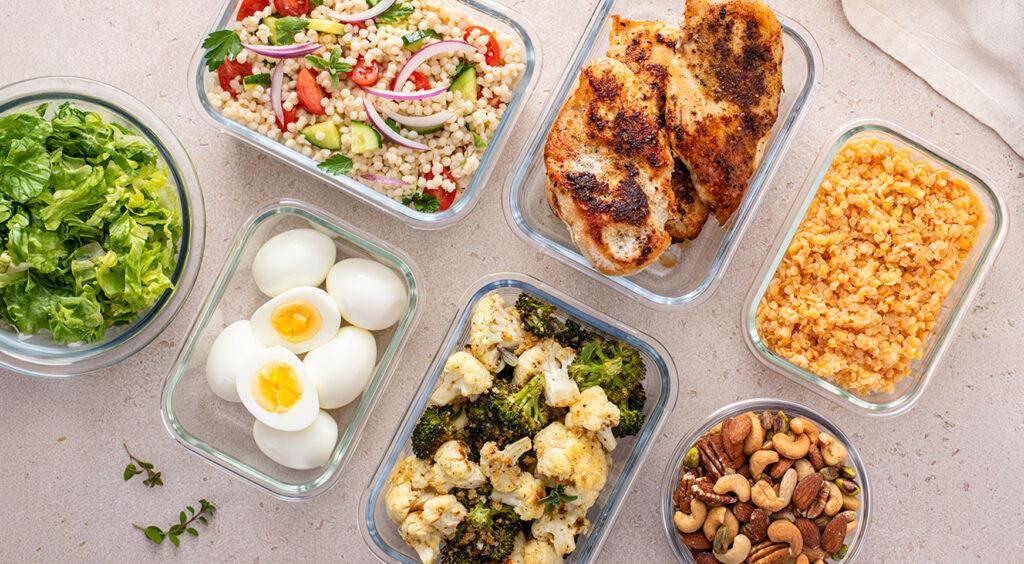Bug protein powder smoothies? Cricket flour muffins? Why it’s time to consider eating more insects
By Carolyn Ali and Sachintha Wickramasinghe

Insects are highly nutritious, and there are many delicious ways to incorporate them into your diet
Dr. Yasmin Akhtar understands that many people are squeamish about eating bugs. But she hopes that those who are will open up to the idea for the sake of the planet—and their own health.
“People should be thinking about alternative protein sources, and insects could be the meat of the future,” says Dr. Akhtar. A sessional lecturer in the Faculty of Land and Food Systems at the University of British Columbia, she teaches an applied biology course about the benefits and risks of eating insects. She points out that the world’s population is expected to increase to 10 billion by 2050, and eating more insects is one way to help feed more people sustainably as the climate changes.
People in many cultures around the world already incorporate insects into their diet, she notes, in countries such as Mexico and Brazil. But for those who the idea is new, there are many reasons to give it a try. Below, Dr. Akhtar offers some entry-level tips.
Why eat insects? Health and planetary benefits
There are two key benefits to eating insects, according to Dr. Akhtar.
The first is environmental. Eating insects encourages the sustainable use of diverse insect species, rather than relying on a small number of traditional livestock species to meet the world’s needs. And while some insects can be caught and eaten in the wild, farming insects is a way to provide for large-scale protein needs and a relatively cheap cost. That means small-scale farmers can benefit.
“Rearing insects requires much less space, fewer resources like water and much less feed,” she explains. Farming insects produces much lower greenhouse gas emissions than cattle or pigs, for example.
The second reason is health. “Many insects are incredibly nutritious,” she points out. “They are high in protein, calcium, good fatty acids and vitamins.” For example, a species of grasshoppers commonly eaten in Mexico, Sphenarium purpurascens, contains 48 grams of protein per 100 grams, compared to 27 grams of protein per 100 grams of beef.
Insects such as crickets and mealworms can be ground and made into flour or protein powder. Insect protein is easily absorbed by humans, and some insects contain all the essential amino acids that humans need.
How to eat bugs
You can eat bugs such as crickets whole. “They usually have a nutty flavour, and insects absorb the flavor of spices very well,” says Dr. Akhtar. She likes to barbecue crickets, which dry out and become very crunchy. She also uses roasted crickets to add crunch to dishes such as hummus.
But Dr. Akhtar acknowledges that eating chocolate covered ants, for example, may not appeal to everyone. “For some people, eating insects triggers a disgust response. They’re thought of as dirty, and pests.”
There are indeed risks to eating insects: those captured from the wild could be contaminated with pesticides that were used to spray fruits a vegetables. Insects also live in a lot of different environments, including soil, and can be infested with microorganisms like bacteria, fungi and other viruses.
But the risks can be mitigated similar to how we carefully source and prepare other things we eat. “Just like other animal proteins, insects should be treated before they are consumed, using heat to boil or cook them, for example.”
You can purchase insects from insect farms, where they are safely raised to be used as food. But if you’re allergic to seafood, take note: you’ll likely also be allergic to insects because they share similar protein allergens.
Cricket flour and bug protein powder
While insect products are still scarce in North American grocery stores, they are available online. Dr. Akhtar acknowledges that farmed insects aren’t currently an inexpensive protein source. But she’s optimistic that as acceptance of eating insects rises and demand goes up, the number of insect farms will grow, and prices will decrease.
“Insect flours and insect powders are an easy way to incorporate bugs into your diet,” says Dr. Akhtar. Simply replace wheat flour in any recipe with the insect flour for tasty, high-protein baked products. She uses insect flour to make samosas, muffins, tortillas and more.
Those starting off can use a small amount first; for example, replace half the regular flour or protein powder in a recipe with an insect version. Once you’re used to the nutty taste and texture, go from there.
Dr. Akhtar adds cricket protein powder to smoothies and green tea for extra nutrition, and sprinkles it on veggie fried rice. Here’s Dr. Akhtar’s recipe for a berry smoothie.

Recipe: Berry Smoothie with Cricket Protein
Ingredients
Note: Fruit may be fresh or frozen
- ½ cup (125 mL) Greek yogurt
- 1 cup (250 mL) milk
- 1 cup (250 mL) strawberries
- 1 cup (250 mL) blueberries
- ½ cup (125 mL) cranberries
- 1 banana
- 1 date
- 1 tsp (5 mL) chopped almonds
- 1 Tbsp (15 mL) cricket protein powder
- 2 tsp (5 mL) honey
- ½ to 1 cup (125 mL to 250 mL) ice cubes
Method
Put all ingredients in a blender and process until smooth. Serve with fresh mint leaves on the top. Makes two large smoothies.
Carolyn Ali is a writer for UBC Brand and Marketing; Sachintha Wickramasinghe is a writer for UBC Media Relations. This article was published on January 17, 2024. Feel free to republish the text of this article, but please follow our guidelines for attribution and seek any necessary permissions before doing so. Please note that images are not included in this blanket licence.


